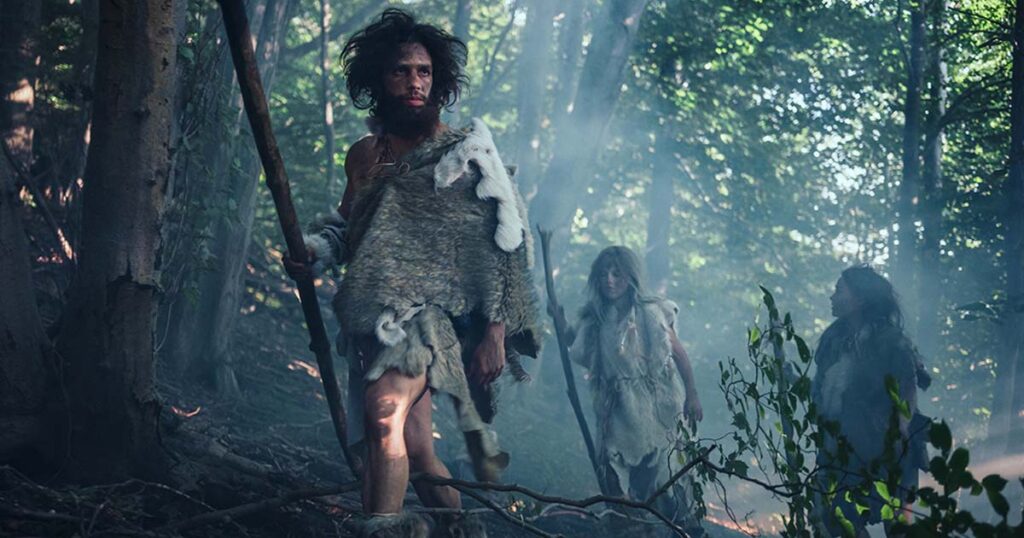

It has been 5 years since the unearthing of Denny, a 90,000-year-old fossil specimen that had a Denisovan father and a Neanderthal mother. This find served as proof that interbreeding was quite common amongst early human species. A new study has gone into the nuances of this, uncovering how alterations in Earth’s orbital trajectory around the Sun, occurring over hundreds of thousands of years, facilitated the interbreeding between Neanderthals and Denisovans.

Denisova II (Denny) bone fragment discovered at Denisova Cave in Russia, which provides evidence of interbreeding between Denisovans and Neanderthals. (Katerina Douka & Tom Higham/ Science)
Exploring Habitat Selection by Denisovans and Neanderthals
The contemporary genetic makeup of humans carries traces of DNA inherited from other ancient human species, such as Neanderthals and the lesser known Denisovans. For example, Neanderthal genetic contributions constitute approximately 2 percent of the genetic makeup within non-African populations. In contrast, individuals from Southeast Asia and Oceania possess a more substantial genetic overlap, sharing up to 5 percent of their genome with Denisovans.
These early interbreeding dynamics have also been linked to historical fluctuations in atmospheric CO2, climate shifts and alterations in vegetation, according to the study published in Science. The study collaborated between researchers hailing from South Korea and Italy, consisting of climate experts and paleo-biologists.
They employed a combination of anthropological insights, genetic information and sophisticated supercomputer simulations to delineate the geographical habitats of Neanderthals and Denisovans. This comprehensive approach enabled them to discern distinct ecological preferences: Neanderthals exhibited a penchant for warmer surroundings, favoring temperate forests and grasslands, while Denisovans displayed a proclivity for colder locales, such as boreal forests and tundra landscapes.
“This means that their habitats of choice were separated geographically, with Neanderthals typically preferring southwestern Eurasia and Denisovans the northeast,” says Dr. Jiaoyang Ruan, postdoctoral researcher at the IBS Center for Climate Physics (ICCP), South Korea, and lead author of the study.

Illustration of the preferred habitats of Denisovans and Neanderthals, and potential interbreeding areas in Central Asia and northern Europe. (Institute for Basic Science / Science)
Did Climate Change Cause Neanderthals and Denisovans to Intermingle?
Based on their meticulous computer simulations, the researchers unveiled that during warm interglacial periods, characterized by Earth’s more elliptical orbit around the Sun and the proximity of northern hemisphere summers to the Sun, the habitats of different hominin species began to overlap geographically.
“When Neanderthals and Denisovans shared a common habitat, there were more encounters and interactions among the groups, which would have increased the chance of interbreeding,” adds Prof. Axel Timmermann, corresponding author of the study and director of the ICCP and professor at Pusan National University.
These simulations not only contextualize the emergence of the first-generation Neanderthal-Denisovan hybrid, Denny, within a climatic framework, but also align with other documented instances of interbreeding that occurred around 78,000 and 120,000 years ago, according to a press release.
Looking ahead, forthcoming paleo-genetic analyses can put the reliability of these novel predictions, based on the advanced supercomputer model, to the test regarding potential intervals of interbreeding roughly 210,000 and 320,000 years ago.
The researchers began the process of understanding the climatic influences behind the oscillating east-west interbreeding pattern. They closely examined the evolving vegetation patterns across Eurasia over the span of the past 400,000 years. Their investigation revealed a pivotal role played by elevated atmospheric CO2 levels and relatively mild interglacial conditions.
These factors facilitated the eastward expansion of temperate forests into central Eurasia, effectively creating pathways for Neanderthal dispersal into regions inhabited by the Denisovans. The precise existence of Denisovans to the west of the Altai mountains remains uncertain, yet this aspect can be subjected to scrutiny through comprehensive genetic analyses of Denisovan ancestry within European populations, reports Discover Magazine.

Denny’s remains were discovered in Denisova Cave in Siberia, Russia, a fossil specimen which provided evidence of the interbreeding between Denisovans and Neanderthals. (Демин Алексей Барнаул / CC BY-SA 4.0)
‘Contact Hotspots’: A Love Story with Visible Genetic Traces Today
The researchers leveraged the insights acquired to pinpoint the geographical regions where interactions between Neanderthals and Denisovans were most likely to have occurred. They designated Central Eurasia, the Caucasus, the Tianshan and the Changbai mountains as the probable contact hotspots between these two ancient human species.
This corresponds effectively with genetic evidence, which points towards the occurrence of a minimum of six distinct instances of interbreeding between Neanderthals and Denisovans. Overall, the study authors say their findings highlight how “glacial-interglacial climate swings likely played an important role in favoring gene flow between archaic humans.”
In general, Denisovans are a tough cookie to crack, in all ways. They have a limited fossil record (consisting primarily of a few teeth and a finger bone found in the Denisova Cave in Siberia, Russia), and there is a scarcity of available genetic data. The researchers faced these hurdles when conducting this study.
“To deal with the very sparse Denisovan dataset, we had to devise new statistical tools, which could also account for known ancestral relationships amongst human species,” claimed Prof. Pasquale Raia from University of Naples, Federico II in Italy, co-author of the study. “This allowed us for the first time to estimate where Denisovans could have lived. To our surprise, we found that, apart from areas in Russia and China, also northern Europe would have been a suitable environment for them,” he added.
“It is as if glacial-interglacial shifts in climate created the stage for a unique and long-lasting human love story, whose genetic traces are still visible today,” concluded Dr. Ruan.
Top image: Early Homin migration caused by climate change could have been the driving force between interbreeding between Denisovans and Neanderthals. Source: Gorodenkoff / Adobe Stock
By Sahir Pandey
References
Hrodey, M. 16 August 2023. “Did Early Humans Interbreed? These Scientists Made a Map to Prove It” in Discover Magazine. Available at: https://www.discovermagazine.com/the-sciences/did-early-humans-interbreed-these-scientists-made-a-map-to-prove-it
Ruan, J. et al. 10 August 2023. “Climate shifts orchestrated hominin interbreeding events across Eurasia” in Science, 381 (6658). Available at: DOI: 10.1126/science.add4459
Taub, B. 16 August 2023. We Now Know What Enabled Sex Between Neanderthals And Denisovans. Available at: https://www.iflscience.com/we-now-know-what-enabled-sex-between-neanderthals-and-denisovans-70274